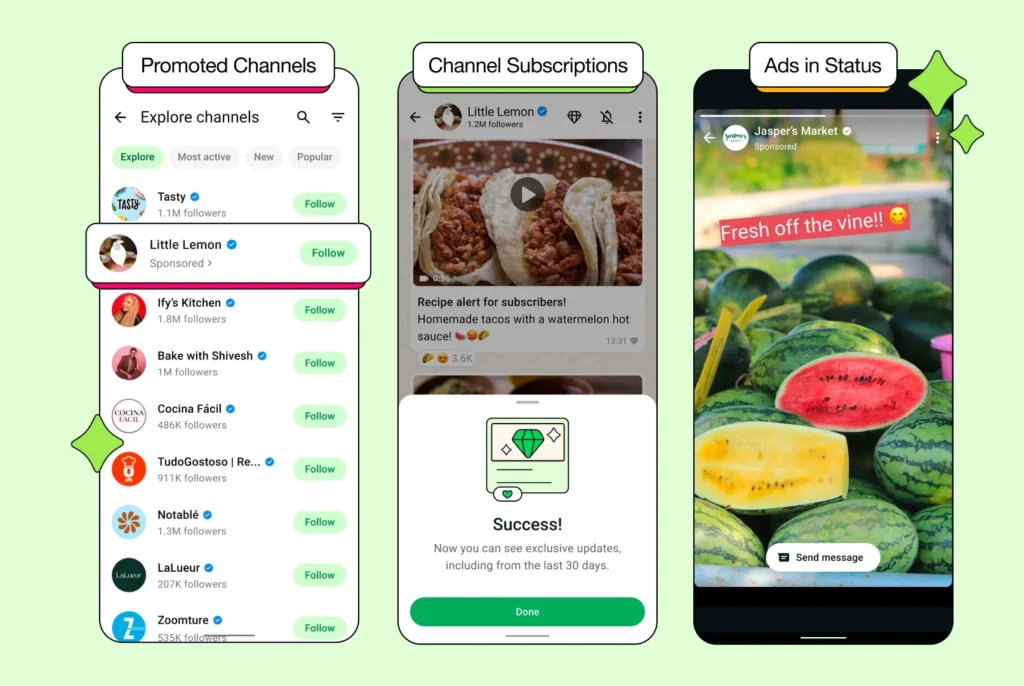Meta is introducing ads to WhatsApp for the first time, a noticeable change in the messaging app’s business model. These ads will appear in the Status and Channels sections, which attract about 1.5 billion daily users. Alongside ads, WhatsApp will allow channel owners to offer paid subscriptions for exclusive content. Meta’s decision leverages WhatsApp’s massive user base while respecting user privacy and maintaining the core messaging experience.
What’s Happening & Why This Matters
WhatsApp has historically resisted showing ads, but as part of Meta’s broader revenue strategy, ads are coming to the app’s Status feature. This section functions similarly to Instagram Stories, where users share photos and videos with their friends. Soon, users will see ads between these stories, although Meta has not confirmed the exact frequency at which they will appear.
Meta assures that personal chats, calls, and group messages will remain ad-free and end-to-end encrypted. The company explicitly states it will not use message content or contacts to target ads. Instead, ads will rely on less sensitive data, such as location, language, interaction with WhatsApp Channels, and past ad engagement.
WhatsApp Channels function like large group broadcasts, where businesses, celebrities, and influencers communicate with their followers. Meta plans to let channel owners charge for exclusive content through subscriptions, similar to platforms like Patreon. This creates new revenue opportunities for creators and businesses within WhatsApp’s ecosystem.

This expansion reflects Meta’s effort to monetize WhatsApp’s 2 billion+ users without compromising privacy or personal messaging. Ads and subscriptions focus on public, opt-in content areas rather than private conversations.
The move raises privacy concerns, particularly in Europe, where the European Commission is questioning WhatsApp’s compliance with the Digital Markets Act (DMA) and the General Data Protection Regulation (GDPR). Privacy group NOYB, led by Max Schrems, criticizes Meta’s approach as forcing users to choose between privacy and affordability. Schrems warns that Meta’s data linking and personalized ads lack genuine consent and violate EU law.
The controversy fuels fears of a user exodus to privacy-focused apps like Signal, which remains ad-free and funded by donations.
Despite these challenges, Meta’s WhatsApp ad model aligns with the company’s broader ad revenue strategy. In 2025, Meta generated $164.5 billion in revenue, with $160.6 billion from advertising. The WhatsApp changes could unlock a fresh revenue stream from one of the world’s largest digital platforms.
TF Summary: What’s Next
Meta’s introduction of ads and paid subscriptions in WhatsApp’s Status and Channels sections represents a new monetization phase for the app. While privacy safeguards remain in place, regulatory scrutiny, especially in Europe, could influence implementation and user acceptance.
Businesses and content creators gain new tools for engagement and revenue, but users concerned about privacy may migrate to alternative messaging platforms. The success of WhatsApp’s ad expansion depends on which is valued more: monetization or user trust.
— Text-to-Speech (TTS) provided by gspeech


